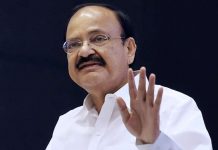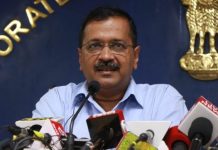
MYTH # 2 UNITED THEY OPPOSE
Given the debates on growing intolerance in India, ban after ban, and the aggressive communal stance of Hindu Right outfits, most Opposition parties have spoken out against the BJP and its allies. However, there is little unanimity among the Opposition on other political and economic issues. Although there was a combined opposition to the land acquisition and Good and Services Tax (GST) Bills, NDA-2 did manage to pass several other bills in Parliament.
Political pundits feel that the Congress spearheaded the united opposition against land acquisition and GST. Its current numbers in the Rajya Sabha enabled it to stall any Bill it was opposed to. However, these numbers will change dramatically, first in 2016 and then in 2018. Within three years, the Congress will become a ghost of itself in the Upper House. Unless it does well in the future Assembly elections — its performance was beyond expectations in Bihar — it will find it tough to rally the regional parties.
There have been instances in the past where regional parties took a stance contrary to that of the Congress. Maharashtra’s Nationalist Congress Party decided to support the BJP in the state and Uttar Pradesh-based Mulayam Singh Yadav of the Samajwadi Party walked out of the Grand Alliance in Bihar, which comprised JD(U), RJD and the Congress. Now, given Nitish Kumar’s wonderful performance in Bihar, regional parties such as the TMC in West Bengal, the BJD and the AIADMK may wish to form a Third Front under Nitish’s leadership and with support from Congress.
These circumstances will reduce the Congress to the stature of a non-mainstream political party, a process that began during the run-up to the 2014 Lok Sabha election. No wonder Jaitley felt confident that Nitish, despite his alliance with the Congress in Bihar, would support the GST, along with other allies and a few non-allies such as the BJD and AIADMK. If the BJP manages to woo the non-Congress Opposition parties, it may still get the numbers in the Rajya Sabha.
In fact, the united opposition against the BJP was enabled in no small measure by the Congress’ numbers in the Upper House as the ruling party would not talk to the largest opposition party in Parliament. In the future, if the BJP continues its discussions with the non-Congress parties and the Congress’ strength in the Rajya Sabha is depleted, the regime might just find the going less tough. The process has already begun, with Jaitley saying that he was willing to evolve a consensus even with Rahul Gandhi. However, to make any headway there, the BJP and its allies, both political and ideological, will need to go slow on the Hindutva agenda.
MYTH # 3 FUTURE OF REFORMS
Although most critics view the BJP’s Bihar loss as an end to reforms, or in terms of more obstacles on that path, there may be several positives for the government. First, it won’t be in a hurry to push through, or even bulldoze, policies. A JD(U) Rajya Sabha member said on a TV channel that there were several instances in the past few months when the NDA-2 would introduce Bills without informing the other parties. It seemed like a case of majoritarian tyranny, although the BJP dubbed the Opposition in the Rajya Sabha as the “tyranny of numbers”. This may reduce in the future.
Second, this change in the mindset will lead to a process where the BJP will try to arrive at a consensus, both with its allies and those who may be sympathetic to their causes. Clearly, this will change the political process and will be healthier for the functioning of a democracy. Policies and new initiatives will be debated and discussed, both within the government and outside it in a more transparent and open manner than has happened in the past 18 months. The BJP can easily reap the benefits of an Opposition, which only seems to be united.
After the Bihar results, in a note, Japanese investment bank Nomura said, “The fact remains that with or without a Bihar victory, the NDA would have had to accelerate its efforts to build consensus with some of the smaller Opposition parties to progress on its legislative reform agenda — the Bihar elections makes this even more critical.” Such analyses present the Bihar verdict as a possible turning point for the Modi government in a positive manner.
Third, the BJP, as it did with land acquisition, will explore other ways to introduce policy changes rather than try to pass Bills in Parliament. There are a number of reforms that require executive decisions, or the states can be asked to introduce them. A few experts feel that even portions of GST can be put in place through the executive or the friendly states. Therefore, the reforms process may not lose momentum; only the manner in which policy interventions are made may see some change. This will require the Centre to work closely with the states, which is a sign of a mature democracy.
Fourth, economic reforms are not about a centralised and top-down approach. The UPA-2 tried the same during its past two years of governance, when it set up the Projects Monitoring Group in the Prime Minister’s Office (PMO) to hasten the progress of mega projects. It failed since such projects require clearances at the levels of the state, district and local bodies. Modi tried the same, when the PMO began to dictate what the states should do to help the business community. This needed to change, and after the Bihar elections, the chances are higher.
Finally, reforms are about growth, and growth is not just about the manufacturing sector. Over the past 18 months, Modi has focussed largely on manufacturing, which was epitomised by his ambitious ‘Make in India’ campaign. But, as several states like Bihar have shown, one can achieve consistently high growth rates by incentivising other sectors. In Bihar, for instance, the push for growth and employment came from sectors like construction, real estate, trade and financial services. The same can happen in several other states – and nationally.
Clearly, the future of reforms and growth will not be decided by the Bihar results. Nor will it be greatly influenced by what happens in other Assembly polls over the next two years. It will be the product of a changed political economy. It will be dictated by the manner in which the BJP retains its political and ideological positions minus the aggression, but works with other parties to evolve an economic consensus. Most important, the agenda will gain from a realisation that this is not the time for new policies only, but a time to do things and then showcase them.
To achieve this aim, Modi needs to re-strategise and rethink. He needs to jettison his ambitious streak to prove that the ‘Gujarat Model’ can work at the national level. Instead, he has to tweak the model to make it work in every state. Only then will he realise that the sum is greater than its parts. He has another 42 months to go, which is enough. But can he change his politics to achieve his economic goals? It is a $2 trillion question.
editor@tehelka.com












